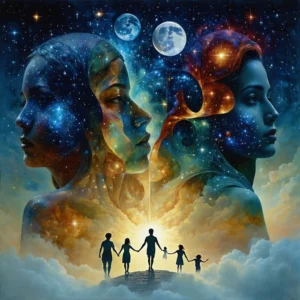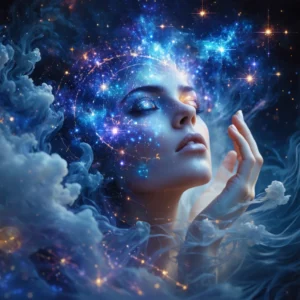
The fascination with zodiac signs has spanned centuries and cultures. In ancient times, scholars and sky-watchers observed patterns in the heavens, which eventually emerged as the familiar zodiac. Today, many people refer to their zodiac sign as a symbolic representation of personality, fate, and celestial influence.
Introduction to the Zodiac
Throughout history, civilizations such as the Babylonians, Greeks, and Egyptians played significant roles in crafting zodiacal ideas. They divided the sky into 12 segments, each linked to constellations and imbued with mythological narratives. Moreover, early astronomers recognized that celestial bodies moved within these divisions, and they used this understanding to predict seasonal changes and social events. Consequently, the zodiac evolved into both a practical and mystical system that continues to captivate modern audiences.
Historical Foundations and Early Innovators
Babylonian Beginnings
Initially, the Babylonians formulated the concept of zodiac signs around the first millennium BCE. They observed that planets and the Sun traversed a defined band in the sky, which inspired early astrological charts. They divided this celestial path into 12 equal parts and associated them with various deities and agricultural cycles. In addition, the Babylonians connected earthly events with celestial motions, thereby giving birth to a practice later adopted by other cultures.
Greek and Egyptian Influences
Subsequent civilizations enhanced and expanded these early ideas. For instance, Greek astronomers and philosophers like Ptolemy developed comprehensive systems that merged observation with mythology. Egyptians also contributed, incorporating their own myths and symbols into the zodiac. Furthermore, these interactions facilitated the spread of astrological lore along trade routes, which enriched the meanings and associations attached to each sign.
Anatomy of a Zodiac Sign
Modern zodiac signs represent more than just celestial coordinates; they embody characteristics and archetypes rooted in ancient observations. Several fundamental elements serve as the building blocks for these signs:
- Celestial Positions: The placement of the Sun, Moon, and planets within specific sectors of the sky.
- Mythological Ties: Narratives and deities that historically influenced the symbolic traits of each sign.
- Cultural Interpretations: Unique traditions and customs that evolved from regional observations of the heavens.
In particular, the interchange between observational astronomy and mythology enriched the concept, resulting in a legacy that continues to influence art, literature, and personal identity.
Cultural Impact and Continued Relevance
When ancient observers charted the skies, they did so with the belief that cosmic events held clear connections to earthly affairs. Likewise, many contemporary individuals use zodiac signs to seek guidance and meaning in their daily lives. Furthermore, astrology provides a lens through which believers connect with the universe. As a result, zodiac signs have permeated various aspects of modern culture, and they appear in newspapers, apps, and online communities. Additionally, celebrities and public figures often share their astrological profiles, which propels further public interest.
How Zodiac Signs Were Invented
The invention of zodiac signs did not occur as a single event but rather as an evolutionary process. Initially, early astronomers divided the sky into segments based on the movement of the Sun and stars, and they used the natural order of life to assign meaning to these divisions. Moreover, each sign gradually adopted attributes from associated myths and cultural narratives, which often reflected observations of seasonal changes and human experiences. In order to systematize these concepts, various cultures established symbols and date ranges that revealed a connection between the cosmos and personal destiny.
Evolution and Adaptation Through the Ages
The journey of zodiac signs weaved through various historical periods, and many innovations contributed to the modern interpretation of astrology. For example, medieval scholars synthesized Greek knowledge with Islamic traditions, and European thinkers reintroduced these ideas during the Renaissance. Consequently, astrology adapted to new cultural contexts, and it evolved with advances in astronomy. Consider the following timeline for clarity:
- Babylonian Era: Division of the celestial sphere into 12 segments.
- Greek Period: Integration of mythology with astronomical observations.
- Medieval Times: Synthesis of diverse cultural influences.
- Modern Era: Digital dissemination and personalized astrological readings.
This timeline underscores how adaptive and resilient the zodiac system has been despite changing social and scientific landscapes.
Scientific Perspectives and Contemporary Debates
Although astrology holds historical and cultural significance, scientists question its empirical validity. Researchers often note that while astronomy bases its theories on measurable phenomena, astrology intertwines symbolic interpretation with human subjectivity. Nonetheless, many people find that astrology nurtures self-reflection and contextualizes daily experiences. Additionally, discussions about the zodiac frequently emphasize the difference between scientific inquiry and cultural practice. Consequently, the debate surrounding its scientific status remains vigorous. Interested readers should explore both perspectives to gain a balanced understanding.
Practical Applications Today
Various platforms now present zodiac insights in creative ways. Digital media offers personalized horoscopes, and mobile applications provide interactive charts that track planetary movements. Furthermore, educational programs sometimes include astrology as part of cultural history. The following table summarizes key aspects of modern zodiac usage:
| Aspect | Description |
|---|---|
| Personal Identity | Individuals connect with zodiac traits to understand themselves better. |
| Cultural Heritage | Zodiac signs reflect mythological and historical traditions from various cultures. |
| Entertainment | Horoscopes and zodiac forecasts captivate millions worldwide. |
Moreover, many enthusiasts argue that zodiac signs offer profound symbolic meaning that transcends mere entertainment. They appreciate the balance between mystery and wisdom woven into the celestial narrative.
Conclusion: The Enduring Legacy of the Zodiac
In summary, the zodiac symbolizes an ancient attempt to understand the cosmos and its influence on human life. Pioneers like the Babylonians, Greeks, and Egyptians crafted systems that transformed astronomical observations into persuasive myths. As societies evolved, these symbols embodied both scientific curiosity and cultural artistry, which continues to influence modern identity and literature. Therefore, while modern science may challenge astrological claims, the zodiac endures as a testament to humanity’s long-standing quest for meaning and enlightenment. Ultimately, astrology persists as an intriguing blend of observation, myth, and human imagination that invites further exploration and reflection.





